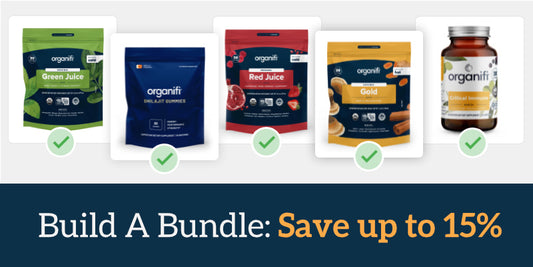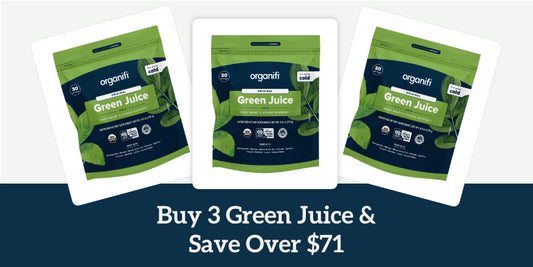Did you know that the average American grocery store carries close to 40,000 “food” items nowadays? With that many options, you may find yourself coming home with a cart full of impulse items. The food industry is using expert marketing techniques to influence our choices. The good news is that the demand for healthier foods is on the rise. The bad news is that some companies are marketing their products to seem much healthier than what they actually are. It’s important to know what to look for in order to ensure everything you’re coming home with will support you in reaching your health goals rather than sabotage them.
Here are 10 tips to make sure your shopping cart is filled with the healthiest and most nutrient dense foods to help you feel your best this year.
1. Shop the perimeter
Focus on the foods found along the perimeter of the grocery store as much as possible. The perimeter of the grocery store is where you will typically find all of your produce, meats, poultry & seafood, dairy/eggs, and fresh breads. These are the perishable foods which means less preservatives and food additives. The center aisles are filled with popular convenience foods that are loaded with sugars, unhealthy fats, food additives and preservatives to keep a person addicted and craving more.
2. Load up on fresh fruits and veggies
Fresh fruits and vegetables are an excellent source of vitamins, minerals and phytonutrients. They also nourish the normal gut bacteria to support a healthy GI tract. Vegetables are especially high in fiber which will slow the absorption of sugar and toxins. Eating a wide variety of them can also increase your energy and mental clarity, reduce problems caused by bowel and liver toxicity, help reduce symptoms of allergies, asthma, arthritis, skin issues, digestive problems, and chronic pain.
3. Buy organic whenever possible
Organic foods contain no antibiotics, synthetic hormones, toxic pesticides, GMO’s and artificial preservatives or food enhancers. Organic food is better for our health in general as it reduces harmful chemical consumption that can impact the gut, brain, endocrine and nervous system. Ideally you want to buy all your produce organic but if that is not a possibility, check out the clean 15, dirty dozen list to reference which produce to prioritize.
4. Read the ingredient list
The best way to truly get an idea of what you are putting in your body is to look at the ingredient list on the back of a product. The less ingredients the better, a food that doesn’t require an ingredient list at all, is best. (You don’t need an ingredient list to identify an apple). Keep in mind that ingredients are listed in order of quantity. If a product lists high fructose corn syrup first, you can assume that item is primarily sugar. There are plenty of food ingredients that are in products on our shelves that have not been approved by the FDA and are harmful to our health. It’s best to steer clear of any food items with ingredients that you can’t pronounce or make you feel as though you need a chemistry degree to understand what they are.
5. Learn what the labels mean
The food industry is getting sneaky. They know the demand for healthier food and products is increasing and often that means the marketing on the packaging can be confusing. Don’t rely on the marketing claim on the front of the package. For example if you see a salad dressing claiming “made with olive oil”, don’t take their word for it. Look at the ingredient list to verify. A company can claim that it has healthier ingredients but they are in minimal amounts and the product as a whole still primarily consists of unhealthy ingredients.
6. Avoid vegetable oils, hydrogenated and partially-hydrogenated oils
Vegetable oils are extremely fragile. They are easily damaged by heat, light and oxygen which causes them to go rancid during the extraction process. Hydrogenation is the process of turning liquid oil into a solid fat. This gives processed and packaged foods a longer shelf life. To produce them, manufacturers begin with the already rancid vegetable oils such as soy, corn, cottonseed or canola oil and mix them with tiny metal particles through a high temperature and pressure process. Deodorants and bleaches need to be added due to the unappetizing color and foul smell. Hydrogenation produces trans fats which are linked to numerous health problems. Man-made trans fats such as margarines and shortening disrupt our cell function and cause free radical damage in the body. They do not have any place in a healthy diet
7. Avoid chemical additives
All packaged and processed foods are going to have chemical additives to extend their shelf life and are highly toxic. These chemical additives are unrecognizable in the body which negatively affect your health. They cause an immune response and can begin to stress and damage various organs in the body. Some of the most damaging to look out for include, but are not limited to: MSG, carrageenan, high fructose corn syrup, maltodextrin, sodium nitrates, artificial food coloring, flavorings and sweeteners
8. Look for grass fed and pastured raised meats
The quality of your food is extremely important because it ensures you are getting the best nutritional value. Conventional feedlot farming has changed the composition of the food supply leaving us with nutrient poor options that are loaded with hormones, steroids, and antibiotics. Those toxins get stored in the animal’s fat. If we consume meat loaded with hormones and steroids they then become a part of us and can lead to hormonal imbalances and excess weight. Look for organic, pastured, free range, and grass fed animal protein options and wild caught fish and seafood. They are lower in total fat and calories, are higher in Omega-3 fatty acids and the saturated fats that they contain are actually good for you as they are absolutely essential for brain and heart health. I encourage you to make whatever swaps fit into your budget.
9. Look for local and or in season products
Some grocery stores will carry local and in season produce and products. If you can’t find any in store, check to see if you have any local farmer’s markets. Local and seasonal produce tends to be fresher, more delicious and maintains more nutritional value. It has been picked at its peak and can be consumed closer to the time of harvest. In addition to local produce you might be able to find local breads, sauces, dips and honey. This not only supports local farmers in your community but it also reduces your carbon footprint since there is less transportation and refrigeration time. A win-win for you, the community and our environment!
10. Make a list and don’t go hungry
We’ve all done it. You run into the grocery store after work to pick up something quick for dinner and before you know it, you’re walking out staring at the receipt wondering where that $100 just went. As you put your bag of groceries in the trunk you’re quickly reminded by a bag of chips and a pint of ice cream staring back at you. Going to the store when you’re hungry can lead to poor choices resulting in the purchase of higher calorie items and leads to overspending. Try to plan out your meals for the week. Make a list of exactly what you need and stick to it to to save time and money so you won’t find yourself roaming the grocery store on an empty stomach
About the author: Elisa Hepler is a certified Nutritional Therapy Practitioner and Culinary Nutrition Expert. She enjoys sharing her personal story on how making specific dietary changes transformed her life and helped her overcome specific health issues. Elisa has worked with clients 1:1, taught classes, and hosted workshops on the importance of including organic whole foods, herbs and functional mushrooms. She has a drive to help others better understand the complexities of how nutrition and food affect the health of the body as a whole.





